On this page
University of Chicago Press: bird related books.This page collects together bird related books published University of Chicago Press. The books are listed in order of publication date with the most recent at the top.
|
|
|
|
The Peregrine Returns: The Art and Architecture of an Urban Raptor RecoveryMary Hennen
Illustrations: Peggy MacNamara
University Of Chicago Press
2017
"In The Peregrine Returns, Mary Hennen gives wings to this extraordinary conservation success story. Drawing on the beautiful watercolours of Field Museum artist-in-residence Peggy Macnamara and photos by Field Museum research assistant Stephanie Ware, as well as her own decades of work with peregrines, Hennen uses a program in Chicago as a case study for the peregrines' journey from their devastating decline to the discovery of its cause (a thinning of eggshells caused by a by-product of DDT), through to recovery, revealing how the urban landscape has played an essential role in enabling falcons to return to the wild – and how people are now learning to live in close proximity to these captivating raptors. Both a model for conservation programs across the country and an eye-opening look at the many creatures with which we share our homes, this richly illustrated story is an inspiring example of how urban architecture can serve not only our cities' human inhabitants, but also their wild ones."
|
Buy from amazon.co.uk 
|
|
Snowbird: Integrative Biology and Evolutionary Diversity in the JuncoEditor: Ellen D. Ketterson, Jonathan W. Atwell
University of Chicago Press
2016
"While common and widespread, juncos also exhibit extraordinary diversity in color, shape, size, and behavior across their range, making them ideal study subjects for biologists interested in ecology and evolutionary diversification. Intended for scholars, citizen scientists, and amateur ornithologists, alike, Snowbird synthesizes decades of research from the diverse and talented researchers who study the Junco genus. Though contributors approach their subject from a variety of perspectives, they share a common goal: elucidating the organismal and evolutionary processes by which animals adapt and diversify in response to environmental change. Placing special emphasis on the important role that underlying physiological, hormonal, and behavioral mechanisms play in these processes, Snowbird not only provides a definitive exploration of the junco’s evolutionary history and behavioral and physiological diversity but also underscores the junco’s continued importance as a model organism in a time of rapid global climate change. By merging often disparate biological fields, Snowbird offers biologists across disciplines an integrative framework for further research into adaptation, population divergence, and the formation of new species."
|
Buy from amazon.co.uk 
|
|
Messages from Islands: A Global Biodiversity TourIlkka A, Hanski
University of Chicago Press
2016
"In Why Birds Matter, an international collection of ornithologists, botanists, ecologists, conservation biologists, and environmental economists seeks to quantify avian ecosystem services the myriad benefits that birds provide to humans. The first book to approach ecosystem services from an ornithological perspective, Why Birds Matter asks what economic value we can ascribe to those services, if any, and how this value should inform conservation. Chapters explore the role of birds in such important ecological dynamics as scavenging, nutrient cycling, food-chains, and plant-animal interactions all seen through the lens of human well-being to show that quantifying avian ecosystem services is crucial when formulating contemporary conservation strategies. Both elucidating challenges and providing examples of specific ecosystem valuations and guidance for calculation, the contributors propose that in order to advance avian conservation, we need to appeal not only to hearts and minds, but also to wallets."
|
Buy from amazon.co.uk 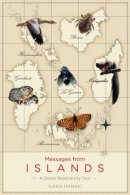
|
|
Why Birds Matter: Avian Ecological Function and Ecosystem ServicesEditor: Ça?an H. Sekercioglu, Daniel G. Wenny & Christopher J. Whelan
University of Chicago Press
2016
"In this career-spanning work, Ilkka Hanski draws upon the many islands on which he has performed fieldwork to convey key themes in ecology. By exploring the islands' biodiversity as an introduction to general issues, Hanski helps us to learn how species and communities interact in fragmented landscapes, how evolution generates biodiversity, and how this biodiversity is maintained over time. Beginning each chapter on a particular island, Hanski dives into reflections on his own field studies before going on to pursue a variety of ecological questions, including: What is the biodiversity crisis? What are extinction thresholds and extinction debts? What can the biodiversity hypothesis tell us about rapidly increasing allergies, asthma, and other chronic inflammatory disorders? The world's largest island, Greenland, for instance, is the starting point for a journey into the benefits that humankind acquires from biodiversity, including the staggering biodiversity of microbes in the ecosystems that are closest to us the ecosystems in our guts, in our respiratory tracts, and under our skin. Conceptually oriented but grounded in an adventurous personal narrative, Messages from Islands is a landmark work that lifts the natural mysteries of islands from the sea, bringing to light the thrilling complexities and connections of ecosystems worldwide."
|
Buy from amazon.co.uk 
|
|
City Creatures: Animal Encounters in the Chicago WildernessGavin Van Horn
University of Chicago Press
2015
"City Creatures introduces readers to an astonishing diversity of urban wildlife with a unique and accessible mix of essays, poetry, paintings, and photographs. The contributors bring a story-based approach to this urban safari, taking readers on birding expeditions to the Magic Hedge at Montrose Harbor on the North Side, canoe trips down the South Fork of the Chicago River (better known as Bubbly Creek), and insect-collecting forays or restoration work days in the suburban forest preserves. The book is organized into six sections, each highlighting one type of place in which people might encounter animals in the city and suburbs."
|
Buy from amazon.co.uk 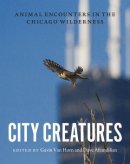
|
|
The Art of Migration: Birds, Insects, and the Changing Seasons in ChicagolandPeggy McNamara
University of Chicago Press
2013
"Tiny ruby-throated hummingbirds weighing less than a nickel fly from the upper Midwest to Costa Rica every fall, crossing the six-hundred-mile Gulf of Mexico without a single stop. One of the many creatures that commute on the Mississippi Flyway as part of an annual migration, they pass along Chicago's lakefront and through midwestern backyards on a path used by their species for millennia. This magnificent migrational dance takes place every year in Chicagoland, yet it is often missed by the region's two-legged residents. The Art of Migration uncovers these extraordinary patterns that play out over the seasons. Readers are introduced to over two hundred of the birds and insects that traverse regions from the edge of Lake Superior to Lake Michigan and to the rivers that flow into the Mississippi. As the only artist in residence at the Field Museum, Peggy Macnamara has a unique vantage point for studying these patterns and capturing their distinctive traits. Her magnificent watercolor illustrations capture flocks, movement, and species-specific details. The illustrations are accompanied by text from museum staff and include details such as natural histories, notable features for identification, behavior, and how species have adapted to environmental changes. The Art of Migration follows a gentle seasonal sequence and includes chapters on studying migration, artist's notes on illustrating wildlife, and tips on the best ways to watch for birds and insects in the Chicago area."
|
Buy from amazon.co.uk 
|
|
The Global PigeonColin Jerolmack
University of Chicago Press
2013
"The pigeon is the quintessential city bird. Domesticated thousands of years ago as a messenger and a source of food, its presence on our sidewalks is so common that people consider the bird a nuisance - if they notice it at all. Yet pigeons are also kept by people all over the world for pleasure, sport, and profit, from the "pigeon wars" waged by breeding enthusiasts in the skies over Brooklyn to the Million Dollar Pigeon Race held every year in South Africa. Drawing on more than three years of fieldwork across three continents, Colin Jerolmack traces our complex and often contradictory relationship with these versatile animals in public spaces such as Venice's Piazza San Marco and London's Trafalgar Square and in working-class and immigrant communities of pigeon breeders in New York and Berlin. By exploring what he calls "the social experience of animals," Jerolmack shows how our interactions with pigeons offer surprising insights into city life, community, culture, and politics."
|
Buy from amazon.co.uk 
|
|
Extreme Measures: The Ecological Energetics of Birds and MammalsBrian McNab
University of Chicago Press
2012
"Along with reproduction, balancing energy expenditure with the limits of resource acquisition is essential for both a species and a population to survive. But energy is a limited resource, as we know well, so birds and mammals - the most energy-intensive fauna on the planet - must reduce energy expenditures to maintain this balance, some taking small steps, and others extreme measures. Here Brian K. McNab draws on his over sixty years in the field to provide a comprehensive account of the energetics of birds and mammals, one fully integrated with their natural history. McNab begins with an overview of thermal rates - much of our own energy is spent maintaining our 98.6[degrees]F temperature - and explains how the basal rate of metabolism drives energy use, especially in extreme environments. He then explores those variables that interact with the basal rate of metabolism, like body size and scale and environment, highlighting their influence on behavior, distribution, and even reproductive output. Successive chapters take up energy and population dynamics and evolution. A critical central theme that runs through the book is how the energetic needs of birds and mammals come up against rapid environmental change and how this is hastening the pace of extinction."
|
Buy from amazon.co.uk 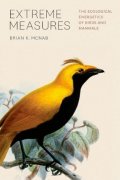
|
|
Darwin's Finches: Readings in the Evolution of a Scientific ParadigmEditor: Kathleen Donohue
University of Chicago Press
2011
"Two species come to mind when one thinks of the Galapagos Islands - the giant tortoises and Darwin's fabled finches. While not as immediately captivating as the tortoises, these little brown songbirds and their beaks have become one of the most familiar and charismatic research systems in biology, providing generations of natural historians and scientists a lens through which to view the evolutionary process and its role in morphological differentiation. In "Darwin's Finches", Kathleen Donohue excerpts and collects the most illuminating and scientifically significant writings on the finches of the Galapagos to teach the fundamental principles of evolutionary theory and to provide a historical record of scientific debate. Beginning with fragments of Darwin's Galapagos field notes and subsequent correspondence, and moving through the writings of such famed field biologists as David Lack and Peter and Rosemary Grant, the collection demonstrates how scientific processes have changed over time, how different branches of biology relate to one another, and how they all relate to evolution. As Donohue notes, practicing science today is like entering a conversation that has been in progress for a long, long time. Her book provides the history of that conversation and an invitation to join in."
|
Buy from amazon.co.uk 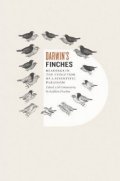
|
|
Bird Watch: A Survey of Planet Earth's Changing EcosystemsMartin Walters
University of Chicago Press
2011
"From the tufted puffin in the Pacific Northwest to the hook-billed hermit in the Brazilian rainforest, birds suffer from the effects of climate change in every corner of the globe. Scientists have found declines of up to 90 percent in some troubled bird populations and unprecedented reproductive failure in others. The most recent studies suggest dire prospects: 1,227 avian species are threatened with extinction and an additional 838 near-threatened species are urgent priorities for conservation action. As much an indispensable guide as a timely call to action, Bird Watch is an illustrated tour of these endangered birds and their habitats. Encyclopedic in scope, this book features all 1,227 species on the International Union for Conservation of Nature (IUCN) Red List, thoroughly detailing the environmental pressures and conservation prescriptions that hold their futures in the balance. After introducing readers to the main threats to birds and regions at high risk, Bird Watch presents a visually stunning and scientifically accurate flight over the major bird habitats, including tropical forests; temperate and northern forests; deserts; mountains; grasslands; and Mediterranean, marine, freshwater, and oceanic islands. The volume concludes with an overview of bird species by region - categorized by family within each region, and a guide to the world's best birding sites. Produced in cooperation with BirdLife International, Bird Watch is a celebration of the beauty and diversity of birds and their habitats - and a warning of the dangers they face around the world."
|
Buy from amazon.co.uk 
|
|
The American Bird Conservancy Guide to Bird ConservationDaniel J. Lebbin, Michael J. Parr and George H. Fenwick
University of Chicago Press
2010
"Even the casual observer is aware that birds don't fill our skies in the number they once did. That awareness has spawned conservation action that has led to notable successes, including the recovery of some of the nation's most emblematic species, such as the Bald Eagle, Brown Pelican, Whooping Crane, and Peregrine Falcon. Despite this, a third of all American bird species are in trouble - in many cases, they're in imminent danger of extinction. The most authoritative account ever published of the threats these species face, "The American Bird Conservancy Guide to Bird Conservation" will be the definitive book on the subject. The Guide presents for the first time anywhere a classification system and threat analysis for bird habitats in the United States, and the most thorough and scientifically credible assessment of threats to birds published to date, as well as a new list of birds of conservation concern. Filled with beautiful color illustrations and original range maps, the Guide is a timely, important, and inspiring reference for birders and anyone else interested in conserving North America's avian fauna. But this book is far more than another shout of crisis. The Guide also lays out a concrete and achievable plan of long-term action to safeguard our country's rich bird life."
|
Buy from amazon.co.uk 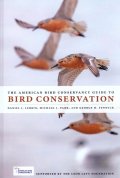
|
|
The Ecology and Conservation of Asian Hornbills: Farmers of the ForestMargaret F. Kinnaird and Timothy G. O'Brein
University of Chicago Press
2008
"Hornbills are among the world's most distinct birds. Easily identified by their oversized beaks adorned with large casques, they range from Africa to India and throughout Asia. One of the oldest bird orders, they have been known to mankind for millennia and loom large in the mythology of indigenous cultures of tropical Asia. In the past thirty years, ecologists have uncovered many fascinating aspects of hornbill biology, from their unique nest-sealing behavior to their roles as farmers of the forest. Building on fourteen years of research, Margaret F. Kinnaird and Timothy G. O'Brien offer in The Ecology and Conservation of Asian Hornbills the most up-to-date information on the evolution, reproduction, feeding ecology, and movement patterns of thirty-one species of Asian hornbills. The authors address questions of ecological functionality, ecosystem services, and keystone relationships, as well as the disturbing influence of forest loss and fragmentation on hornbills. Complemented by superb full-color images that provide rare glimpses of hornbills in their native habitat and black-and-white illustrations that highlight intriguing aspects of hornbill behavior."
|
Buy from amazon.co.uk 
|
|
Architecture by Birds and Insects: A Natural ArtPeggy MacNamara
University of Chicago Press
2008
"Architect Philip Johnson once mused, "All architecture is shelter; all great architecture is the design of space that contains, cuddles, exalts, or stimulates the persons in that space." But with just a small swap of a key word, Johnson could well have been describing animal nests. Birds and insects are nature's premier architects, using a dizzying array of talents to build functional homes in which to live, reproduce, and care for their young. Recycling sticks, branches, grass, and mud to construct their shelters, they are undoubtedly the originators of "green architecture."A visual celebration of these natural feats of engineering and ingenuity, "Architecture by Birds and Insects" allows readers a peek inside a wide range of nests, offering a rare opportunity to get a sense of the materials and methods used to build them. Inspired by the vast nest collection at the Field Museum, Chicago, which features specimens gathered throughout North and South America, Peggy Macnamara's paintings are enhanced by text written by museum curators. This narrative provides a foundation in natural history for each painting, as well as fascinating anecdotes about the nests and their builders.Like so many natural treasures, nests are easy to ignore. But Macnamara's gorgeous paintings will undoubtedly change that. "Architecture by Birds and Insects" at last gives the tiniest engineers their rightful moment in the spotlight, and in so doing increases awareness and encourages the protection of birds, insects, and their habitats."
|
Buy from amazon.co.uk 
|
|
Extinction and Biogeography of Tropical Pacific BirdsDavid W. Steadman
University of Chicago Press
2006
"Reconstructing the avian world in the same way archeologists re-create ancient human societies, David W. Steadman - a leading authority on tropical Pacific avian paleontology - has spent the past two decades in the field, digging through layers of soil in search of the bones that serve as clues to the ancient past of island bird communities. His years of indefatigable research and analysis are the foundation for "Extinction and Biogeography of Tropical Pacific Birds," a monumental study of the landbirds of tropical Pacific islands - especially those from Fiji eastward to Easter Island - and an intricate history of the patterns and processes of island biology over time. Using information gleaned from prehistoric specimens, Steadman reconstructs the birdlife of tropical Pacific islands as it existed before the arrival of humans and in so doing corrects the assumption that small, remote islands were unable to support rich assemblages of plants and animals. Easter Island, for example, though devoid of wildlife today, was the world's richest seabird habitat before Polynesians arrived more than a millennium ago. Grounded in geology, paleontology, and archaeology, but biological at its core, "Extinction and Biogeography of Tropical Pacific Birds" is an exceptional work of unparalleled scholarship that will stimulate creative discussions of terrestrial life on oceanic islands for years to come."
|
Buy from amazon.co.uk 
|
|
Amniote Paleobiology: Perspectives on the Evolution of Mammals, Birds, and ReptilesMatthew Carrano
University of Chicago Press
2006
"Living amniotes - including all mammals, birds, crocodilians, snakes, and turtles - comprise an extraordinarily varied array of more than 21,000 species. Found in every major habitat on earth, they possess a truly remarkable range of morphological, ecological, and behavioral adaptations. The fossil record of amniotes extends back three hundred million years and reveals much about modern biological diversity of form and function. A collaborative effort of twenty-four researchers, "Amniote Paleobiology" presents thirteen new and important scientific perspectives on the evolution and biology of this familiar group. It includes new discoveries of dinosaurs and primitive relatives of mammals; studies of mammalian chewing and locomotion; and examinations of the evolutionary process in plesiosaurs, mammals, and dinosaurs. Emphasizing the rich variety of analytical techniques available to vertebrate paleontologists - from traditional description to multivariate morphometrics and complex three-dimensional kinematics - "Amniote Paleobiology" seeks to understand how species are related to each other and what these relationships reveal about changes in anatomy and function over time."
|
Buy from amazon.co.uk 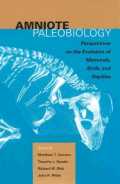
|
|
Antipredator Defences in Birds and MammalsTim Caro
University of Chicago Press
2005
"In nature, the ability to defend against predators is fundamental to an animal's survival. From the giraffes that rely on their spotted coats to blend into the patchy light of their woodland habitats to the South American sea lions that pile themselves in heaps to ward off the killer whales that prey on them in the shallow surf, defense strategies in the animal kingdom are seemingly innumerable. In Antipredator Defenses in Birds and Mammals, Tim Caro ambitiously synthesizes predator defenses in birds and mammals and integrates all functional and evolutionary perspectives on antipredator defenses that have developed over the last century. Structured chronologically along a hypothetical sequence of predation - Caro evokes a gazelle fawn desperate to survive a cheetah attack to illustrate the continuum of the evolution of antipredator defenses - Antipredator Defenses in Birds and Mammals considers the defenses that prey use to avoid detection by predators; the benefits of living in groups; morphological and behavioral defenses in individuals and groups; and, finally, flight and adaptations of last resort."
|
Buy from amazon.co.uk 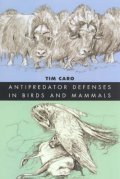
|
|
The Future from the Past: Archaeozoology in Wildlife Conservation and Heritage ManagementEditor: Roel C.G.M. Lauwerier, Ina Plug
University of Chicago Press
2003
"The applications of zooarchaeological research can go far beyond the realms of the lab or the site report. These 18 papers are all concerned with the contributions archaeozoologists make to specific problems encountered in the management and conservation of our natural and cultural heritage. The volume is divided into two parts: Part 1 looks at Zooarchaeology and Wildlife Conservation Issues. Contributors explore a range of subjects, including: how information on past environments can be used to explain the behaviour and distribution of species in the present; whether it is feasible to reintroduce game into areas where the species have become locally extinct; and how collecting and reporting procedures are related to the interpretation of zooarchaeological data. Part 2 covers Archaeozoology and Heritage Management. Contributors discuss the position of archaeozoologists in museums, universities, and private archaeological companies; the role of archaeozoologists in assessing and selecting sites for protection or excavation; and the problem of the deterioration of zooarchaeological material currently held in collections."
|
Buy from amazon.co.uk 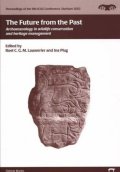
|
|
Vanishing Treasures of the Philippine RainforestLawrence R. Heaney and Jacinto C. Regalado
University Of Chicago Press
1998
"The Philippine rain forest is home to one of the greatest concentrations of unique species of terrestrial vertebrates of any place on earth - more than 510 unique species - and the Philippines may have the world' s most seriously threatened flora and fauna. The text relates how this life came to exist in the islands and explains why the imminent destruction of the forest threatens also the economic and social well-being of the Philippine nation. It identifies the steps needed to be taken to protect both their natural heritage and their country's future."
|
Buy from amazon.co.uk 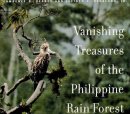
|
|
Neotropical Birds: Ecology and ConservationDouglas F. Stotz, John W. Fitzpatrick, Theodore A. Parker and Debra K. Moskovits
University of Chicago Press
1996
"A synthesis of the ecological information on 4037 species of birds found from Mexico south to Tierra del Fuego. This work summarizes details on 40 key ecological parameters for each bird species. Additional data and further analyses are provided for migratory species. Because bird communities are good indicators of habitat type and condition, and because extensive bird surveys can be done quickly, bird communities are critical to rapid evaluations of an ecosystem's biological value and integrity. The authors analyze the bird species of major habitats from a conservation perspective, and develop specific guidelines to illustrate how governments, conservation organizations, and wildlife managers can use this ecological information to anchor conservation strategies on sound biological reality."
|
Buy from amazon.co.uk 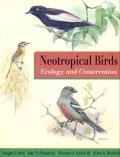
Buy from amazon.co.uk
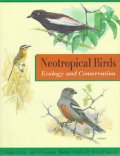
|
|
Red-winged Blackbirds: Decision-making and Reproductive SuccessLes D. Beletsky and Gordon H. Orians
University of Chicago Press
1996
"Drawing on detailed data from their 16-year study of red-winged blackbirds in the marshes of Washington's Columbia National Wildlife Refuge, Les Beletsky and Gordon Orians analyze the information redwings use to make breeding-season decisions and the consequences these decisions have for lifetime reproductive success. Male and female redwings make different, and often independent, decisions - males focus on territory acquisition and maintenance, while females must choose when and where to nest and how much energy to invest in reproduction. Accordingly the authors have taken the approach within this text of studying the two sexes seperately. Using analyses of observational data combined with field experiments and game-theoretical models, the authors provide insights into the complex patterns of reproductive decision-making and breeding behaviour in redwings."
|
Buy from amazon.co.uk
Buy from amazon.com
|
|
Coloniality in the Cliff Swallow: The Effect of Group Size on Social BehaviourCharles R. Brown and Mary Bomberger Brown
University of Chicago Press
1996
"Many animal species live and breed in colonies. Although biologists have documented numerous costs (increased competition for limited resources) and benefits (more pairs of eyes to watch for predators) of group living, they often still do not agree on why coloniality evolved in the first place. Drawing on their 12-year study of a population of cliff swallows in Nebraska, USA, the authors investigate 26 social and ecological costs and benefits of coloniality. They explore how these costs and benefits are reflected in reproductive success and survivorship, and speculate on the evolution of cliff swallow coloniality."
|
Buy from amazon.co.uk 
|
|
The Balance of Nature?: Ecological Issues in the Conservation of Species and CommunitiesStuart L. Pimm
University of Chicago Press
1991
"Ecologists, although they acknowledge the problems involved, generally conduct their research on too few species, in too small an area, over too short a period of time. In The Balance of Nature? a work sure to stir controversy, the distinguished theoretical ecologist Stuart L. Pimm argues that ecology therefore fails in many ways to address the enormous ecological problems now facing our planet. Ecologists describing phenomena on larger scales often use terms like "stability" "balance of nature" and "fragility" and Pimm begins by considering the various specific meanings of these terms. He addresses five kinds of ecological stability stability in the strict sense, resilience, variability, persistence, and resistance and shows how they provide ways of comparing natural populations and communities as well as theories about them. Each type of stability depends on characteristics of the species studied and also on the structure of the food web in which the species is embedded and the physical features of the environment. The Balance of Nature? provides theoretical ecology with a rich array of questions questions that also underpin pressing problems in practical conservation biology. Pimm calls for nothing less than new approaches to ecology and a new alliance between theoretical and empirical studies."
|
Buy from amazon.co.uk 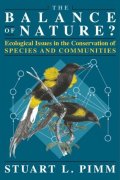
|
|
Atlas of Wintering North American Birds: An Analysis of Christmas Bird Count DataTerry Root
University Of Chicago Press
1989
"The Atlas of Wintering North American Birds represents the efforts of thousands of people who have participated in the Christmas Bird Counts, an annual event sponsored since 1900 by the National Audubon Society. Unlike a conventional field guide, the Atlas doesn't show what birds look like, but rather tells where to find them in the winter months. Terry Root has used the data from the 1963-72 counts to provide the first large-scale biogeographical account of birds wintering in North America. Using sophisticated computer techniques, Root has translated the data into both traditional contour maps and innovative new maps that stimulate three dimensions. The maps show at a glance that, for example, the Baltimore Oriole winters primarily along the eastern seaboard, with the densest populations in Florida between Tallahassee and Gainesville and in North Carolina from Rocky Mount to the Croatan National Forest."
|
Buy from amazon.co.uk
Buy from amazon.com
|
|
Evolutionary Dynamics of a Natural Population: The Large Cactus Finch of the GalapagosR. Grant and P. Grant
University of Chicago Press
1989
"Presents a careful account of the results of a research project which began in 1973 and ran continuously for eleven years. Treats the ecology, behavior and genetics of a population still resident where it evolved, and small enough to permit the identification of every individual. Beautifully produced in every respect."
|
Buy from amazon.co.uk 
|
|
Birds of the Seward Peninsula, AlaskaBrina Kessel
University of Chicago Press
1989
"Bird watchers, ornithologists, and wildlife managers will find in Birds of the Seward Peninsula, Alaska virtually all the information available about Seward Peninsula birds - from rare visitants to overwinterers and regular summer residents. The book is packed with details of distribution and abundance, habitats, nesting and feeding habits, and more, both for birds common to our continent and those that come from Asia."
|
Buy from amazon.co.uk 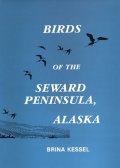
|
|
Flight Strategies of Migrating HawksPaul Kerlinger
University of Chicago Press
1989
"Hawks fly at very high altitudes, sometimes over water, and thus their flight behavior and migration patterns are extremely difficult to study. Now, based on nearly ten years of research, this book provides the most complete analysis to date of how hawks migrate. Paul Kerlinger has employed both direct observations and radar techniques to obtain a much more accurate understanding of the migratory behavior of hawks and the "decisions" they make in flight. And, he has integrated data on the flight behavior of raptors in general with information about their ecology, physiology, evolution, and nonmigratory behavior. Kerlinger begins with an overview, discussing ecology and geography, research methods, natural history, and evolution, and atmospheric structure. He then addresses specific aspects of flight behavior: aerodynamics, morphology, mechanics, direction, altitude, flocking, water crossing, speed selection, daily distance traveled, and flight strategies. Kerlinger describes each aspect of behavior quantitatively, testing mechanistic hypotheses. In conclusion, he examines how migrants integrate these behavioral components. Throughout the text he draws comparisons between the migratory flight behavior of hawks and that of other taxa. By means of such comparisons, researchers can gain insight into the selective pressures that shape the behavior of migrant species."
|
Buy from amazon.co.uk 
|
|
Reproductive Success: Studies of Individual Variation in Contrasting Breeding SystemsEditors: T.H. Clutton-Brook
University of Chicago Press
1988
Includes a lengthy section on birds with the following chapters:
- The Great Tit, Parus major - A. J. van Noordwijk and J. H. Balen
- Lifetime Reproductive Success of the Giant Tit, Parus major - R. H. McCleery and C. M. Perrins
- Determinants of Lifetime Reproductive Success in the Song Sparrow - James N. M. Smith
- Lifetime Reproductive Success of House Martins - David M. Bryant
- Factors in Influencing Reproductive Success in the Pied Flycatcher - Paul H. Harvey, Martyn J. Stenning, and Bruce Campbell
- Age and Reproduction in the Sparrowhawk - I. Newton
- Reproductive Success in Bewick's Swans - D. K. Scott
- Reproductive Success in a Lesser Snow Goose Population - F. Cooke and R. F. Rockwell
- Reproductive Success of Kittiwake Gulls, Rissa tridactyla - Callum S. Thomas and J. C. Coulson
- Variation in Breeding Success in Fulmars - Janet C. Ollason and G. M. Dunnet
- Individual Variation in Reproductive Sucess in Male Black Grouse, Tetrao tetrix L. - J. P. Kruijt and G. J. de Vos
- The Effect of Breeding-Unit Size on Fitness Components in Groove-billed Anis - Sandra L. Vehrencamp, Rolf R. Koford, and Bonnie S. Bowen
- Components of Lifetime Reproductive Success in the Florida Scrub Jay - John W. Fitzpatrick and Glen E. Woolfenden
|
Buy from amazon.co.uk 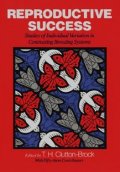
|
|
Birds of CanadaW. Earl Godfrey
University of Chicago Press
2nd edition
1986
|
Buy from amazon.co.uk 
|
|
Eleonora's Falcon: Adaptations to Prey and Habitat in a Social RaptorHartmut Walter
University of Chicago Press
1979
"Named after a Sardinian princess of the fourteenth century who established laws protecting falcons, Eleonora's falcon is the only European bird to breed in autumn and feed its brood on the mass of birds that migrate from Europe to Africa between July and October. It breeds on small Mediterranean islands in colonies of up to 200 pairs and hunts often in groups, preying on more than 90 species of migrant birds. During the winter this falcon visits the rain-soaked woodlands of Madagascar.
In this study - illustrated beautifully and extensively with 59 line drawings and 38 photographs - Hartmut Walter shows how the unique geographical and biological situation of "Falco eleonorae" makes the species' health an important indicator of environmental decay. For though it lives in relatively isolated areas, Eleonora's falcon nevertheless may ingest the many pollutants contained in its diet of birds migrating from industrial Europe. Walter, who has studied raptors on several continents and has been an ornithologist since his early youth, examines several discrete colonies of Eleonora's falcon. He concentrates on the species' intraspecific behavior and ecology - such as the falcons' aggressive actions, hunting strategies, and response to fluctuating environmental conditions - and investigates their evolutionary past."
|
Buy from amazon.co.uk 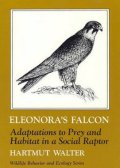
|
|
Manual of Neotropical Birds, Volume 1: Spheniscidae (Penguins) to Laridae (Gulls and Allies)Emmet R. Blake
University of Chicago Press
1977
"Containing more than one-third of the world's bird species, the neotropical region surpasses all other zoogeographic regions in the diversity of its avian fauna. Though the exploration and cataloging stages of ornithology are now virtually complete, new species and undescribed subspecies of birds are still occasionally discovered. In this manual, Emmet R. Blake has drawn on his experience of forty-eight years in the field and laboratory to prepare a comprehensive, detailed, and authoritative synopsis of the avifauna of tropical America as now known."
|
Buy from amazon.co.uk 
|
|
Birds of Mexico: A Guide For Field IdentificationEmmet Reid Blake
University of Chicago Press
1953
"Birds of Mexico fills the need for a comprehensive and authoritative guide to Mexican bird life. Written in a simple, direct style and using non-technical terms, it accomplishes its prime purpose - the sight identification of birds in their natural habitat - in a manner that will be useful to the novice and specialist alike. The only complete guide to the field identification of Mexican birds, it treats all of the 967 species and 2, 000-odd geographical varieties that constitute so colorful and interesting a part of the landscape of Mexico (including Lower California) and its adjacent waters and associated islands."
|
Buy from amazon.co.uk 
|
|